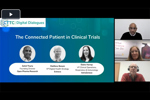Mastering Clinical Data Management: Insights, Strategies, and Emerging Trends
Clinical data management (CDM) and analysis are vital to clinical trials, which require high-quality, statistically sound data to demonstrate a therapeutic’s safety and efficacy. Data must be thoroughly collected, cleaned, and managed in accordance with regulatory standards via a systemic process that dictates how data are entered, validated, and stored. This page presents a comprehensive overview of clinical data management essentials, including the following:
- Fundamentals Of Clinical Data Management
- Regulatory Compliance In Clinical Data Management
- Key Components Of Clinical Data Management
- Tools And Technologies For Clinical Data Management
- Clinical Data Analysis Techniques And Methodologies
- Challenges In Clinical Data Management And Analysis
- Emerging Trends In Clinical Data Management
- Best Practices For Effective Clinical Data Management
- Frequently Asked Questions (FAQs)
Fundamentals Of Clinical Data Management
CDM encompasses a comprehensive, proactive system for gathering, cleaning, managing, and securely storing study data. Increasingly, CDM relies on digital technologies to handle advanced protocol designs and the immense data that today’s studies generate.
Goals Of Clinical Data Management
CDM aims to ensure data accuracy, reliability, and security. Data from disparate sources are generated throughout the clinical trial, including participant reporting, site visits, and remote-monitoring devices like wearables. Relevant data depends on the protocol specifications, and all data must be safely secured to meet regulatory requirements. CDM is essential to every clinical trial or study, but when properly deployed, it can facilitate faster, safer drug development.
The Importance Of Trial Master Files
Trial master files (TMFs) are central repositories for essential clinical trial documents and data that support data integrity and quality. TMFs help studies comply with GCP guidelines and regulatory requirements by providing a complete and accurate record of all trial activities. TMFs include audit trails that track document access and changes, supporting data traceability and version control.
Electronic TMF (eTMF) systems provide centralized storage, access, and management of clinical trial documents and data that are easier to search and retrieve than paper-based systems. eTMF systems can integrate with other clinical trial tools, such as electronic data capture (EDC) systems, for a cohesive and efficient clinical data ecosystem.
ALCOA-CCEA Principles In Clinical Data Management
ALCOA+ principles represent the industry’s high standards for CDM. A CDM strategy must meet these standards to comply with regulatory authorities:
- Attributable: All data collected in a clinical trial must be fully traceable to their source via a robust audit trail that lists who collected the data, where, and when, which follows the FDA's 21 CFR Part 11 guidelines.
- Legible: Data must be readable by humans and kept in a durable, accessible medium.
- Contemporaneous: Data are recorded as soon as they are collected. Every data collection activity, including changes to the original record, is tracked and time stamped.
- Original: All original records are preserved to ensure data integrity. Electronic data systems must maintain the raw data and prevent it from being modified.
- Accurate: Data must be thorough, reliable, and free of errors. Electronic data systems should include accuracy checks and validation controls.
In addition to the basic ALCOA principles described above, CDM also includes:
- Complete: CDM systems must ensure that the data contain all details with nothing deleted from the records and include a thorough audit trail.
- Consistent: To provide consistency, data should be organized chronologically and time-stamped.
- Enduring: Any materials used to collect and store data, including digital systems, must be durable to allow future access and include redundant backup systems.
- Available: Data must be accessible and retrievable for review whenever necessary.
The Role Of The Data Management Plan
A data management plan (DMP) is a blueprint that controls how data are collected, analyzed, stored, and shared throughout the study. The DMP ensures data integrity, consistency, and regulatory compliance by establishing the following:
- Trial overview
- Data management strategy
- Data management organization
- Data collection procedures
- Data validation and quality control measures
- Processes to handle unforeseen conditions and assess potential risks.
Regulatory Compliance In Clinical Data Management
Complying with regulatory requirements is a balancing act between collecting sensitive health information from participants while safeguarding their rights and privacy. Regulations also cover risk-management strategies, documentation, traceability, and data security.
The Role Of The Data Management Plan
The regulatory bodies listed below set stringent standards for CDM to ensure data integrity and quality.
ICH E6(R2)
ICH E6(R2), or GCP, mandates a demonstrable risk management strategy, including analysis, evaluation, and measurable treatment and reporting. This guideline focuses on participant rights and dependable clinical data while encouraging sponsor-investigator communication. It also incorporates ALCOA principles for enhanced document control and management.
ICH M11
ICH M11 introduces a standardized clinical protocol template and technical specifications for clinical trials. The guideline relates to CDM by promoting consistency, efficiency, and data quality across the clinical research ecosystem.
This guideline covers a protocol’s digital data flow, enabling seamless integration with various clinical trial systems such as EDC, clinical trial management systems (CTMS), and electronic clinical outcome assessments (eCOA). ICH M11 also promotes non-proprietary standards for the electronic exchange of clinical protocol information, enhancing interoperability between systems and stakeholders.
By standardizing protocol content and format, ICH M11 reduces data management errors and inconsistencies to meet regulatory requirements across ICH regions, streamlining regulatory reviews and approvals. Finally, ICH M11 covers data-driven decision-making and advanced technologies in clinical research such as auto-generated digital protocols.
FDA Requirements
The FDA has adopted Clinical Data Interchange Standards Consortium (CDISC) standards for clinical trials and guides electronic source data in clinical investigations to ensure data reliability, quality, and traceability. This guideline covers the interoperability between sponsors, investigators, and regulatory agencies and standardizes data collection, management, and sharing methods.
The FDA also has specific requirements for electronic data management in clinical trials, outlined in 21 CFR Part 11, such as:
- validating electronic systems to ensure accuracy, reliability, and consistent performance
- implementing access controls to limit data entry and modifications to authorized individuals
- establishing audit trails to track any changes made to electronic records, including who made the changes, when, and why
- ensuring electronic records are attributable, legible, contemporaneous, original, and accurate
- archiving and retaining electronic data sets for inspection
- complying with GCP standards for data collected within and outside the U.S.
EMA Anonymization Guidelines
The EMA’s Technical Anonymisation Group has developed best practices for anonymizing clinical reports and cover masking (redaction), randomization, and generalization. Policy 0070 provides guidance on the publication of clinical data for medicines and implementing anonymization techniques to protect patient privacy, using data redaction and risk-based approaches.
Additionally, the EMA’s Guideline On Computerised Systems And Electronic Data In Clinical Trials covers:
- ensuring data integrity, confidentiality, and security throughout the clinical trial process
- implementing proper access controls and audit trails to track changes made to electronic records
- adhering to data protection regulations, particularly GDPR (General Data Protection Regulation), while considering specific requirements for clinical trials
- maintaining long-term data retention and archiving policies to ensure accessibility for future inspections or audits.
- using standardized data formats, such as CDISC’s Analysis Data Model or Study Data Tabulation Model, to submit individual patient data.
Ensuring GDPR And HIPAA Compliance
U.S. clinical trials must comply with HIPAA regulations, while those conducted in the EU must meet GDPR standards. Both regulations protect data security and participant privacy in the following key areas:
Data Security And Privacy
All data, including those at rest and in transit, must be encrypted robustly. Strict access controls and user authentication mechanisms keep data secure.
Data Minimization
Only relevant personal data can be collected for research purposes.
Consent Management
Researchers must provide clear, understandable information about data usage so that participants can give explicit, informed consent. Sponsors must also use separate consent forms for trial participation and future data processing.
Data Subject Rights
Companies must allow participants to access or rectify their data, including honoring erasure requests and establishing processes that efficiently handle data subject rights efficiently.
Documentation And Accountability
Companies must maintain detailed records of processing activities, conduct data protection impact assessments for high-risk processing, and appoint a data protection officer to oversee compliance.
Data Handling And Storage
TMFs and medical records must be securely archived, and sensitive data like health records and genetic information require proper handling.
Training and Awareness
Sponsors must provide GDPR and HIPAA compliance training for clinical trial staff and ensure all personnel understand their roles and responsibilities in maintaining data privacy.
Data Traceability And Audit Readiness
A robust DMS is fully prepared for spontaneous, rigorous inspections because it can trace and access all data collected during the study. To comply with regulatory bodies and be audit-ready, companies must consider the following:
Data Traceability
- Audit trails: Record all data changes, including the date, time, user, and reason for each modification.
- Source data verification: Safeguard consistency between collected data and source files and explain any discrepancies.
- Version control: Record any version changes to clinical investigation plans, electronic Case Report Forms (eCRFs), and other essential documents.
- Data lineage: Enable data tracking from initial entry through various analyses to final results.
- System integration: Provide traceability across multiple information systems used in clinical trials, such as CTMS, TMF, investigator site files, and eCRF.
Audit Readiness
- Standardized processes: Implement and follow established audit protocols and SOPs.
- Risk-based approach: Focus on critical data elements and high-risk areas.
- Documentation: Retain comprehensive and up-to-date documentation of all trial-related activities and decisions.
- Regulatory compliance: Adhere to applicable guidelines such as ICH-GCP, GDPR, and HIPAA.
- Training programs: Regularly train staff on best practices and regulatory requirements for data management.
- Continuous monitoring: Establish processes for ongoing compliance checks and internal audits.
- Data quality controls: Implement robust data validation and quality assurance measures.
Key Components Of Clinical Data Management
CDM consists of several key steps to gather, clean, validate, manage, and secure sensitive data, including:
Clinical Data Collection
Data are gathered from various sources during a trial. For instance, EDC systems provide real-time data entry and monitoring while patient-reported outcomes (PROs) and electronic PROs (ePROs) collect data directly from participants. CRFs, both paper-based and eCRFs, add more data to the study, and electronic devices like wearables continuously amass raw data.
Data Cleaning And Validation
Raw data must be rigorously cleaned and validated to ensure accuracy and consistency. Companies implement robust processes to maintain high data integrity, perform routine checks that identify and resolve discrepancies, flag missing data, and clean data to correct errors or inconsistencies.
Database Design And Management
A well-designed database provides efficient data storage and retrieval. Validation and testing are crucial to database development, and user acceptance testing ensures the database is workable.
Data Lock And Archiving
Finally, data must be stored in a secure, retrievable system. First, the study database is backed up before being transferred to a secure location or archival system. Long-term archival strategies encompass storage location, retention period, and retrieval procedures. Data lock and archiving must meet regulatory requirements for data retention and accessibility.
Tools And Technologies For Clinical Data Management
A CDM system requires dedicated tools and technologies to manage clinical trial data efficiently while meeting regulatory requirements. Given the large number of data collected during a trial, advanced digital technologies are replacing traditional paper or spreadsheet data collection methods.
Tools For Clinical Trial Data Management
Digital technologies that improve CDM include:
- EDC systems provide real-time data entry and monitoring.
- CTMS software manages and tracks all clinical activities, including study documents, sponsors, and site payments.
- eCRFs are digital versions of traditional case report forms.
- Clinical data management systems (CDMS) cover the full spectrum of clinical data management.
- Randomization and trial supply management tools handle patient randomization and supply logistics.
- ePRO systems collect patient-reported data directly from participants.
- eConsent platforms ensure informed consent that is accessible to participants.
Tools For Clinical Trial Data Analysis
Additional tools streamline the CDM process, such as:
- Statistical analysis software provides a secure analytics foundation for clinical research.
- Data visualization tools create interactive reports and dashboards for exploring clinical data trends and outliers.
- Clinical trial analytics solutions offer real-time performance metrics and predictive models.
- Risk-based monitoring tools identify data anomalies at various levels to diagnose safety or data quality lapses.
- Clinical data repositories consolidate data from diverse sources for analysis and secure sharing.
Integrating Tools And Systems
Digital solutions can vastly improve data management and integration. For instance, unified platforms combine multiple tools into a single CDM solution. Data integration ETL (extract, transform, load) tools merge data from numerous sources into a single format, while cloud-based solutions simplify integration. Finally, open systems support different programming languages while improving flexibility and integration capabilities.
Clinical Data Analysis Techniques And Methodologies
Once data are collected and cleaned, researchers harness a variety of statistical and analytical techniques to extract meaningful information and draw conclusions. These methodologies enable researchers to validate findings, mitigate biases, and draw actionable insights.
Statistical Methods In Clinical Research
Researchers use several statistical methods to analyze and interpret data, including:
- Descriptive statistics summarize data characteristics by using central tendency and variability.
- Inferential statistics draw conclusions about a population based on sample data.
- Hypothesis testing weighs specific research questions via techniques like t-tests and chi-square tests.
- Regression analysis evaluates relationships between variables and predicts outcomes.
- Analysis of variance measures differences in means among multiple groups.
- Survival analysis assesses time-to-event data through Kaplan-Meier and Cox proportional hazards models.
Analytical Techniques
The following analytical techniques are widely used in clinical research to make data-based insights:
- Time series analysis finds temporal patterns in longitudinal studies.
- Cluster analysis forms patient subgroups based on shared characteristics.
- Bayesian analysis incorporates prior information and updates analyses as data accumulate.
- Machine learning (ML) algorithms identify patterns, predict outcomes, and improve clinical decision-making.
- Real-world evidence (RWE) analysis uses insights from real-world settings to enrich traditional clinical trial data.
- Risk-based monitoring finds data anomalies to determine safety or data quality risk factors.
Challenges In Clinical Data Management And Analysis
Creating a stringent CDM strategy means meeting several challenges head-on. For instance, robust data-validation checks, automated protocols, and regular audits help safeguard data integrity and quality. Additionally, prioritizing data governance, investing in secure data management tools, and focusing on employee training improve CDM processes and protect data integrity.
Ensuring Data Quality
Clinical trial data are subject to high-quality standards to protect participants and develop safe, effective therapeutics. First, all data must be complete and accurate, which presents a significant hurdle. Next, data cleaning is often a manual enterprise, placing a heavy labor burden on researchers. Inconsistent data is another operational challenge, and lack of real-time data access can leave problems undetected.
Handling Unstructured And Complex Data
Today's clinical trials generate exponentially more data than in decades past, which can overwhelm CDM systems. Data have also become more complex, and variations in formats, terminologies, and standards make it difficult to guarantee data quality and integrity. Digital devices like wearables and smartphones are growing in popularity for clinical research, but the raw data they generate are immense and require careful cleaning and analysis.
Data Security And Compliance
Data must be fully secure and compliant with local governing bodies and standards like GDPR and HIPAA to comply with regulatory authorities. Patient privacy is paramount, as unauthorized access to sensitive information could harm participants and damage companies' reputations and relationships with regulators.
Data, Tools, Systems, Integration, And Interoperability
Integrating disparate tools and systems is another common challenge to an effective CDM strategy. Clinical trial data are gathered from multiple sources and systems, and combining these data is a complex, time-consuming enterprise. These systems must also communicate effectively for interoperability, which is crucial for data management. A lack of standardized formats and terminology creates more data-integration obstacles. Finally, adaptive trial designs require real-time data modeling and simulation, further complicating CDM systems.
Emerging Trends In Clinical Data Management
CDM is an evolving field, and new technologies are helping researchers manage clinical data more effectively and efficiently. As clinical trials become more complex and data increase, sponsors are turning to advanced technologies such as AL/ML, real-world data (RWD), wearables, and blockchain/cloud-based solutions.
AI And Machine Learning Applications
AI and ML are transforming CDM in several distinct areas. First, enhanced data-processing AI algorithms rapidly extract and integrate vast data from disparate sources, reducing human error. Predictive analytics AI models use historical and real-time data to predict trial outcomes for informed protocol adjustments, while natural language processing AI turns unstructured data into a usable format.
ML algorithms, in particular, automate data cleaning, detect anomalies, and predict trial outcomes in real time, reducing manual effort and improving data quality. ML streamlines query management, optimizes patient selection, and accelerates database lock timelines. Additionally, ML models can extract insights from unstructured data, integrate diverse data sources, and facilitate risk-based monitoring.
Integration Of RWD/RWE Into Clinical Research
RWE is a growing trend in clinical research because it allows researchers to leverage data from everyday clinical settings and patient experiences. RWE works well in patient-centric models and can be leveraged in adaptive clinical trials, responding to changing needs and populations.
RWD originates from many possible sources, including claims databases, patient-reported outcomes, and other real-world sources. Once gathered, these data are analyzed and interpreted, creating RWE that can be used in clinical research.
To complicated matters, RWD often use different formats and must be standardized. Data quality control and robust validation processes are necessary to create reliable RWE. Advanced analytics and AI/ML can help process large volumes of data, extract insights, and identify patterns.
Interoperability is another factor to consider when using RWE data. Different systems need to communicate effectively and share data seamlessly. Likewise, data security and compliance must be carefully safeguarded to protect participants' sensitive information and meet regulations like HIPAA and GDPR.
Lastly, RWE data management systems must be scalable, as the volume of data can increase dramatically. Cloud-based solutions integrate well with this methodology, providing flexibility and efficiency.
Use Of Wearable Technology In Clinical Trials
Wearable technology like smartwatches and other remote monitoring devices provide continuous data collection, revolutionizing CDM. These devices create longitudinal biometric data sets that grant unique insights into long-term, real-world therapeutic impacts. Wearables are frequently integrated into decentralized trials (DCTs), as participant data can be collected remotely, reducing the need for site visits. Fewer site visits also cut clinical trial costs and increase patient compliance.
Because they generate massive quantities of data, the rise of wearables is also pushing sponsors to adopt advanced technologies like AI/ML and cloud-based solutions to process, manage, and secure these data.
Blockchain And Cloud-Based Solutions
Blockchain and cloud-based solutions are enhancing data security, transparency, and efficiency. Blockchain systems are decentralized to create tamper-proof records and improve data integrity. Cloud-based solutions provide scalable storage, real-time data access, and advanced analytics capabilities. These technologies enable interoperability, sharing data seamlessly across various systems while reducing costs.
Best Practices For Effective Clinical Data Management
Best practices for clinical data management empower companies to improve processes and accelerate drug development timelines while complying with regulatory requirements.
Continuous Training And Education
Researchers need ongoing training and education to adapt to the rapidly changing CDM landscape. Regular workshops on new CDM technologies and methodologies, training sessions on updated regulatory requirements, skills development programs, and cross-functional training all keep staff updated on best practices. For example, The Society For Clinical Data Management (SCDM) offers a variety of training programs.
Collaboration Across Stakeholders
CDM is complex, but the process improves when stakeholders communicate and collaborate regularly. First, clinical teams, data managers, and sponsors should meet regularly to discuss CDM methodologies and challenges. Clear, user-friendly communication channels are essential, and collaborative platforms facilitate real-time data sharing, problem-solving sessions, and decision-making.
Establishing A Robust Data Governance Framework
A comprehensive DMP provides a roadmap that protects data quality and compliance. This strategy includes clearly defined roles and responsibilities for data management, standardized procedures for data collection, entry, and validation, policies for data access, security, and privacy protection, and data retention and archiving guidelines.
Automating Data Cleaning And Validation Processes
Manual data entry and cleaning are laborious, complex processes. AI and ML automate data cleaning in real-time while predicting and preventing data entry errors. Routine data checks and reconciliation processes can also be automated. Custom scripts for study-specific data validation rules also improve efficiency.
Implementing A Quality Metrics Dashboard
Visual representations of data quality indicators improve monitoring and help researchers make data-driven decisions. These tools include real-time displays of KPIs, customizable dashboards for different stakeholders, trend analysis tools, and alert systems for flagging potential issues or discrepancies.
Conducting Regular Audits And Risk Assessments
Routine CDM audits and risk assessments are vital to ongoing compliance, including scheduled internal audits, third-party audits, and continuous risk monitoring and mitigation strategies.
Conclusion
A robust CDM strategy is necessary for modern drug development. Adaptive trial designs, RWE, and wearables are expanding the boundaries of clinical research and generating immense amounts of data. Researchers are turning to technologies like AI/ML, blockchain, and cloud computing to improve efficiency, make informed decisions, and meet regulatory requirements. Leveraging these technologies and adhering to industry best practices safeguards data integrity and accelerates drug development timelines.
Frequently Asked Questions (FAQs)
Below is a list of FAQs related to clinical data management for clinical trials:
1. What is CDM?
CDM collects, cleans, and manages clinical trial data generated to ensure their quality, accuracy, and reliability for analysis and regulatory submissions.
2. Why is CDM important in clinical research?
CDM ensures data integrity, facilitates faster and safer drug development, and helps companies comply with regulatory standards.
3. What are the key stages of the CDM process?
The key stages include data collection, data validation, data cleaning, database lock, and data archiving.
4. What is a DMP?
A DMP outlines the procedures, tasks, and milestones related to data management throughout a clinical trial, serving as a roadmap for managing data.
5. What are some common tools used in CDM?
Common tools include EDC systems, CDMS, and statistical analysis software. Advanced technologies such as AI/ML, blockchain, and cloud computing are becoming more widespread.
6. How is data quality ensured in clinical trials?
Data quality is ensured through meticulous data entry, validation checks, regular audits, and adherence to SOPs and GCP guidelines.
7. What is database locking, and why is it important?
Database locking finalizes a database at the end of a trial, after which no changes can be made. It ensures data integrity before analysis.
8. How are missing data handled in CDM?
Missing data can be handled through various methods, including imputing data, flagging for follow-up, applying statistical methods, and providing proper documentation of handling procedures.
9. What is risk-based monitoring (RBM) in CDM?
RBM tracks critical data and processes and uses real-time data tracking to identify high-risk sites or data points.
10. How does CDM ensure patient data confidentiality?
CDM ensures patient data confidentiality through secure data storage, access controls, data encryption, and compliance with privacy regulations like HIPAA and GDPR.
About The Author
Elizabeth Mann is a skilled writer with over a decade of experience in content creation, specializing in the life sciences industry. As a writer for Life Science Connect, she develops in-depth content that informs and engages professionals in the pharmaceutical, biotechnology, and medical device sectors. Her areas of focus include biologic drug production (including cell and gene therapies), clinical trial design and execution, and drug development and manufacturing outsourcing.
EXPERT INSIGHTS ON DATA MANAGEMENT & ANALYSIS
-
What Is Win Ratio, And How Can It Be Used In Rare Disease Research?
Amber Salzman, CEO of Epicrispr Biotechnologies, explains how applying the win ratio in facioscapulohumeral muscular dystrophy (FSHD) could transform the way researchers evaluate therapeutic impact, enhance statistical efficiency, and improve trial design.
-
Adaptive Trial Design Is Changing Oncology And Hematology Clinical Trials
Pfizer Global Development Lead, Clinical Development Oncology & Hematology, Shreya Badhrinarayanan, MD, explains how adaptive trials, enriched by AI and better data integration, are transforming oncology and hematology clinical research.
-
Can't-Miss Advice On Selecting Your First AI-Enabled Vendor
Quarles & Brady 's Simone Colgan Dunlap and Meghan O’Connor offer actionable guidance to help sponsor companies make informed, strategic choices in an evolving AI market.
-
Sponsors Collect Too Much "Non-Essential" Data, Say Tufts And TransCelerate
A collaboration between Tufts CSDD, Tufts School of Medicine, and TransCelereate BioPharma revealed just how much extra data sponsors are collecting — and why that's a problem.
-
How AI Is Transforming Patient Stratification
Discover how AI tools can help stratify or group patients into subtypes that respond differently to treatment.
EDITORIAL PERSPECTIVES ON DATA MANAGEMENT & ANALYSIS
-
Why HEOR Keeps Arriving Too Late — And How ClinOps Can Fix It
Rob Abbott, CEO of ISPOR, breaks down why HEOR timing keeps clashing with ClinOps timelines and offers practical ways to integrate value, evidence, and payer expectations much earlier in development.
-
FDA Vs. MHRA Vs. EMA: Differences In Externally Controlled Trials
As the FDA, MHRA, and EMA release draft frameworks on externally controlled trials, sponsors face differing expectations. The U.K. leans pragmatic, the U.S. remains cautious, and Europe’s guidance is still evolving — leaving global trial planners to navigate regulatory gray zones.
-
RWE Is Growing Up, And Here's Why That Matters
Real-world evidence is shifting from the margins to the mainstream of drug development, but data quality, trust, and regulatory clarity remain hurdles. ISPOR is helping set the standards to guide its future.
-
Seriously … Are We Making Any Progress?
Ken Getz’s DPHARM talk revealed how ballooning data collection in trial protocols drives costs, delays, and site burden. New ICH E6 R3 guidance pushes for simpler, more flexible designs, but real progress will require collaboration — and restraint.
-
Clinical Trials Get A Council For AI Oversight
AI in clinical trials is moving fast — but without clear standards for ethics, transparency, or oversight. Advarra's new Council for Responsible Use of AI in Clinical Trials aims to change that. Founding members Sanofi, Recursion, and Velocity Clinical Research are stepping up to define what “responsible” really looks like.
ON-DEMAND DATA MANAGEMENT WEBINARS
-
The Connected Patient In Clinical Trials
Discover how digital innovation and patient-centric technologies are reshaping clinical trials by improving access, efficiency, and data-driven insights.
-
Key Trends Driving Digital Transformation In Clinical Research
AI, sensors, and evolving regulations are redefining digital health—driving data insights, sensor-based endpoints, and regulatory pathways that shape the future of clinical research.
-
New ICH GCP Changes Center The Patient
Explore key changes to the guidelines and how they're transforming clinical trials with a focus on patient centricity, digital innovation, and risk-based quality management.
-
De-Risking Strategies For Schizophrenia Programs
Dr. Jeffrey Lieberman, Dr. Alan Kott, and Dr. Chris Murphy dissect why Phase 3 failures are increasing, how data quality issues cluster at specific sites, and why inadequate dose-response mapping continues to derail programs.
-
EU GMP Annex 11: Compliance Strategy And Digital Solutions
Explore how EU GMP Annex 11 revisions could reshape global pharmaceutical compliance, as well as strategies for navigating implementation challenges and building future-ready validation programs.















